
Installation …
In order to be able to operate several PCIe SSDs via a single PCIe slot, the so-called PCIe bifurcation mode is required, at least for the simultaneous operation of all SSDs. The PCIe x16 slot must be set to x4x4x4x4 for the MB204MP-B PCIe card. We will show you how to activate this in the BIOS or UEFI on the following page in Practical testing.
The card can be plugged into a free PCIe 5.0/4.0 x16 slot as usual and is connected to the power supply via a PCIe 6-pin power connector. In our case, a current Seasonic Prime TX-1300 ATX 3.0 PCI 5.0 power supply with sufficient power reserves is used.
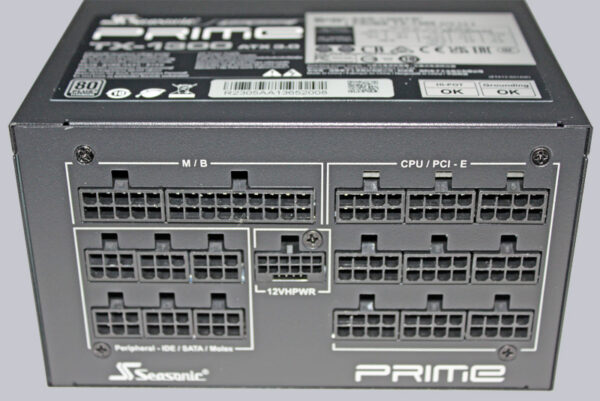
Now the NVMe SSDs are each placed in a tray by inserting the M.2 SSD into the tray with one of the enclosed plastic mounting clips.
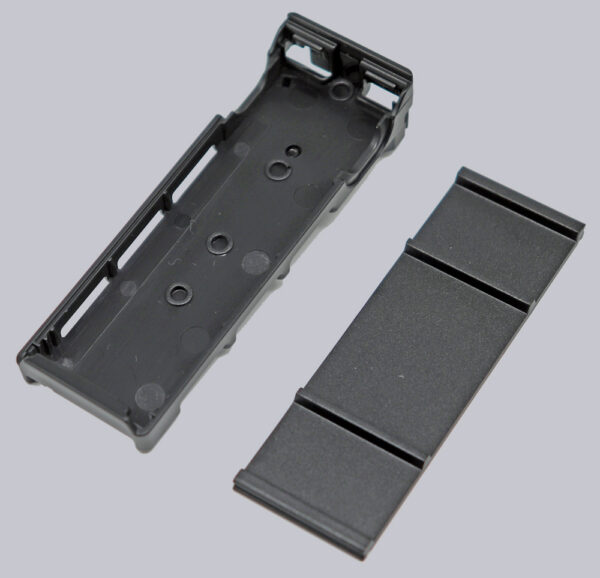
M.2 SSDs in 2280 format are supported, such as this Crucial T705 2TB M.2 PCIe 5.0 NVMe 2280 SSD, but also 2260, 2242 …
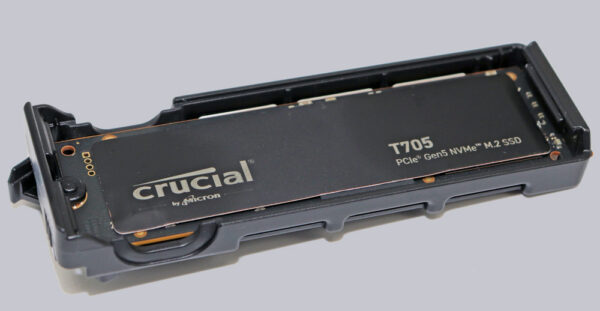
… and the very short 2230 M.2 SSD lengths, as you can see here very nicely with the Crucial P310 1TB M.2 PCIe 4.0 NVMe 2230 SSD.
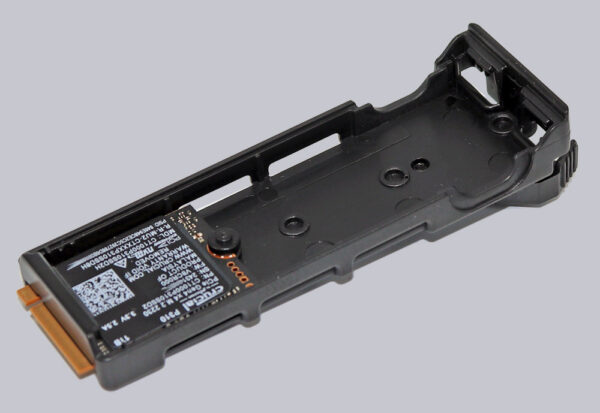
Now remove one protective film from the enclosed thermal pads, place it on the M.2, then remove the protective film from the other side and attach the cover. The cover should snap into place and not stick out. If it does stick out, the SSD has probably not been inserted completely or the wrong way round or does not correspond to the standard thickness of 3.8 mm total height.
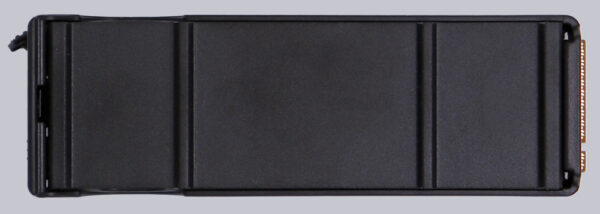
Now the trays with the M.2 SSDs are pushed back into the MB204MP-B PCIe plug-in card and fixed in place with light pressure until the small levers engage in the respective slot of the card.
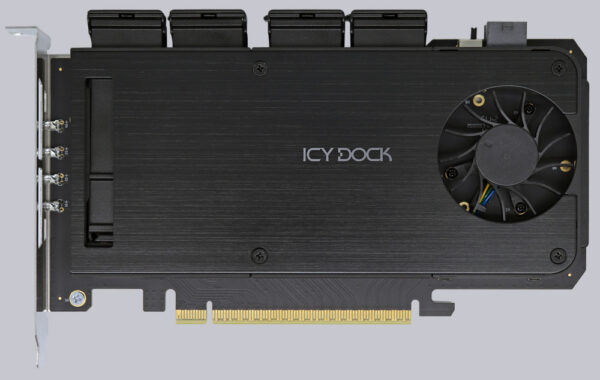
That’s it, this is what the Icy Dock MB204MP-B PCIe plug-in card looks like fully assembled in a PCIe 5.0 x16 slot. Yes, it can even be used on an ITX mainboard.

Now we want to see whether the ExpressSlot Slide can also convince in practical testing.
Icy Dock MB204MP-B 4x M.2 NVMe PCIe card Practical testing …

